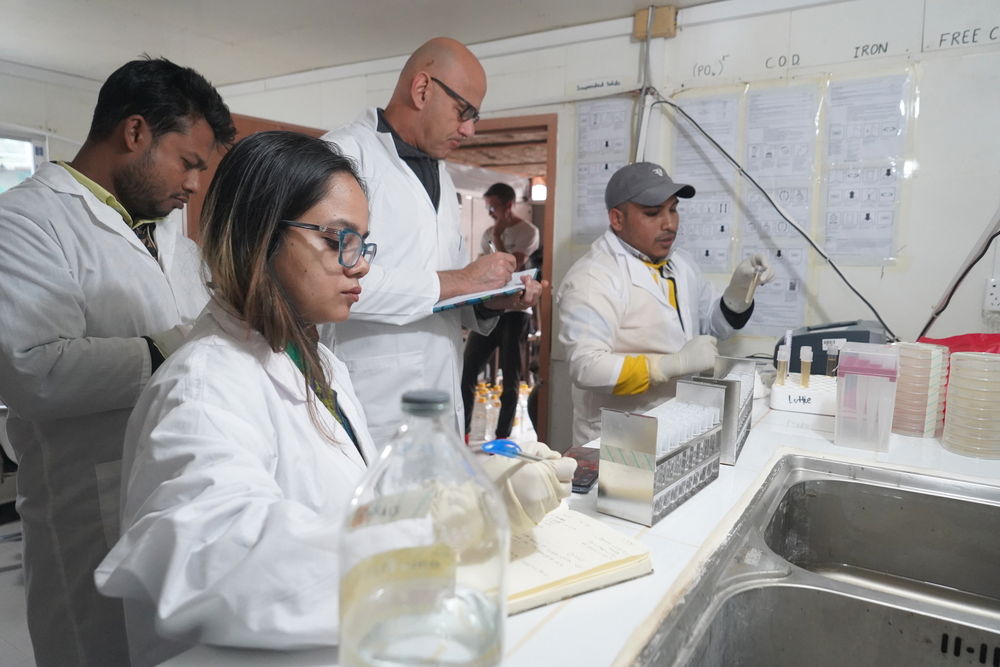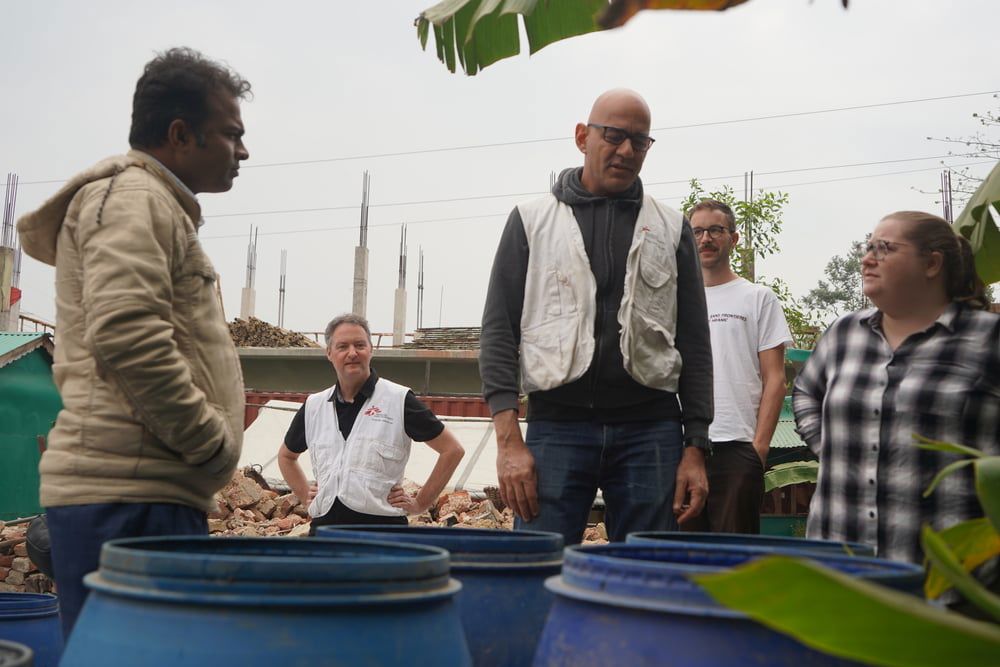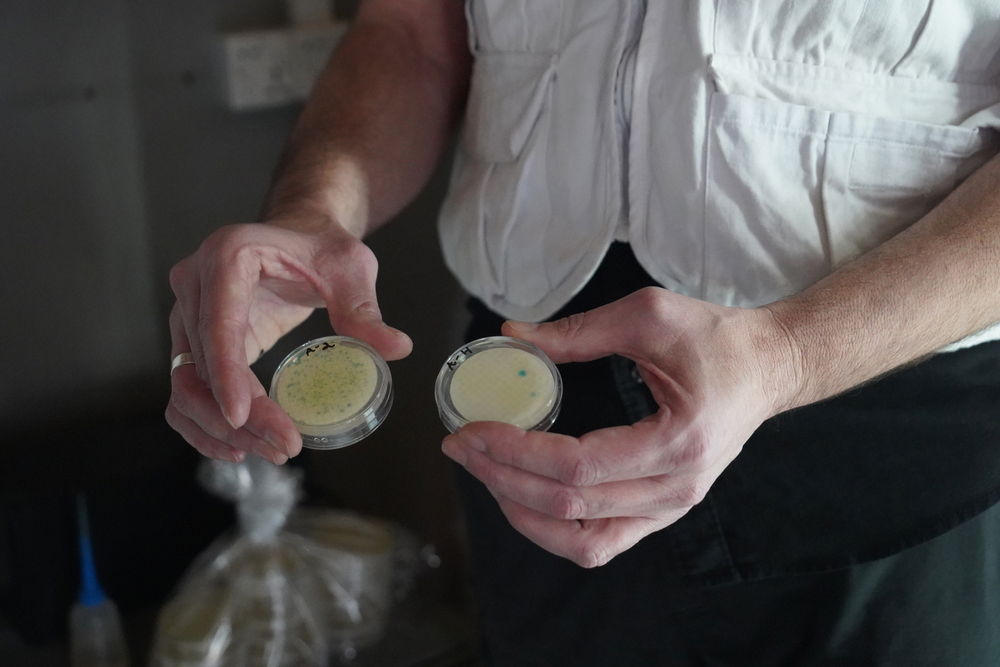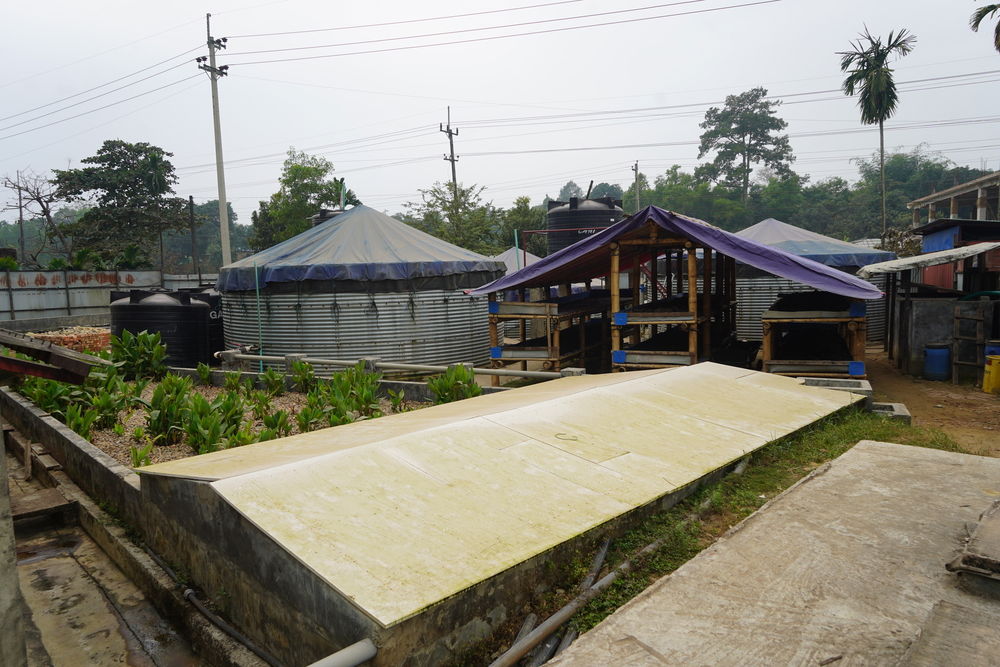When people think of Médecins Sans Frontières / Doctors Without Borders (MSF), images of medical teams providing life-saving care often come to mind. However, MSF's impact extends well beyond medical aid, with significant efforts in areas that are not just medical. One of these unexpected yet essential areas is wastewater management, specifically dealing with fecal sludge. While this may not be the most fragrant of tasks, its importance cannot be overstated.
The process involves separating the waste collected by the sewage trucks into liquid and solid states. "The solid waste can be repurposed as fertiliszer, while the liquid is treated before being released back into the environment," Sarah Mitchell, an MSF water and sanitation expert, says. "Our primary goal during treatment is to ensure neither byproduct poses environmental hazards, particularly when the waste originates from individuals suffering from infectious diseases."
 Dr Diogo Da Silva from the University of Brighton and other researchers during the examining process. They are exploring the use of hydrated lime – Ca(OH)2 – as a method to rapidly process large volumes of fecal waste, particularly useful in emergency settings. © Mohammad Hossein/MSF
Dr Diogo Da Silva from the University of Brighton and other researchers during the examining process. They are exploring the use of hydrated lime – Ca(OH)2 – as a method to rapidly process large volumes of fecal waste, particularly useful in emergency settings. © Mohammad Hossein/MSF
In Cox’s Bazar, Bangladesh, home to the largest refugee camp in the world, MSF operates a fecal sludge treatment facility for one of its hospitals. This facility is the focus of a collaborative project involving Professor James Ebdon and Dr Diogo Da Silva from the University of Brighton, MSF, and BRAC, an international development organiszation based in Bangladesh. They are exploring the use of hydrated lime – Ca(OH)2 – as a method to rapidly process large volumes of fecal waste, particularly useful in emergency settings. While hydrated lime is not a new concept and does not replace traditional wastewater treatment systems, it offers a quick, alternative solution in situations where standard treatments are not feasible, such as during outbreaks of disease.
The use of hydrated lime presents specific challenges, primarily determining the correct amount to effectively neutralize harmful microbes. An insufficient amount might fail to sanitize the waste adequately, leading to the spread of diseases like cholera. On the other hand, using too much makes the process costly and requires additional chemicals for neutraliszing the treated waste.
 Dr Diogo Da Silva from the University of Brighton (in the middle) is explaining the process of analysing the presence of microbes in the sludge. © Mohammad Hossein/MSF
Dr Diogo Da Silva from the University of Brighton (in the middle) is explaining the process of analysing the presence of microbes in the sludge. © Mohammad Hossein/MSF
“The quality of hydrated lime can vary based on its source,” notes Diogo Da Silva. “Our research is partly focused on developing methods to quickly evaluate the quality of lime, ensuring we use it efficiently.” Another challenge is accurately measuring the number of microbes, such as bacteria and viruses, in the sludge. “Performing these assessments in areas with limited resources, under the pressure of emergency conditions, is a complex task,” says James Ebdon. “We have developed a method to detect viruses five or six times faster than other detection methods, which helps in making timely decisions and appropriately adjusting the treatment process.”
 Professor James Ebdon from the University of Brighton shows two Petri dishes, used to identify the presence of viruses in the fecal sludge. © Mohammad Hossein/MSF
Professor James Ebdon from the University of Brighton shows two Petri dishes, used to identify the presence of viruses in the fecal sludge. © Mohammad Hossein/MSF
This research on the use of hydrated lime in emergency settings began with Professor Huw Taylor (University of Brighton) and Jean-Francois Fesselet (MSF) following the 2010 Haiti earthquake. It continued during the 2014 to 2016 Ebola outbreak in West Africa and now in Bangladesh. In emergency and resource-limited settings, the threat of cholera and other water-borne diseases is a constant concern. Parallel to the medical teams’ efforts to save lives in hospitals, wastewater management teams are striving to enhance their techniques, aiming to prevent the outbreak of waterborne diseases in the future.



